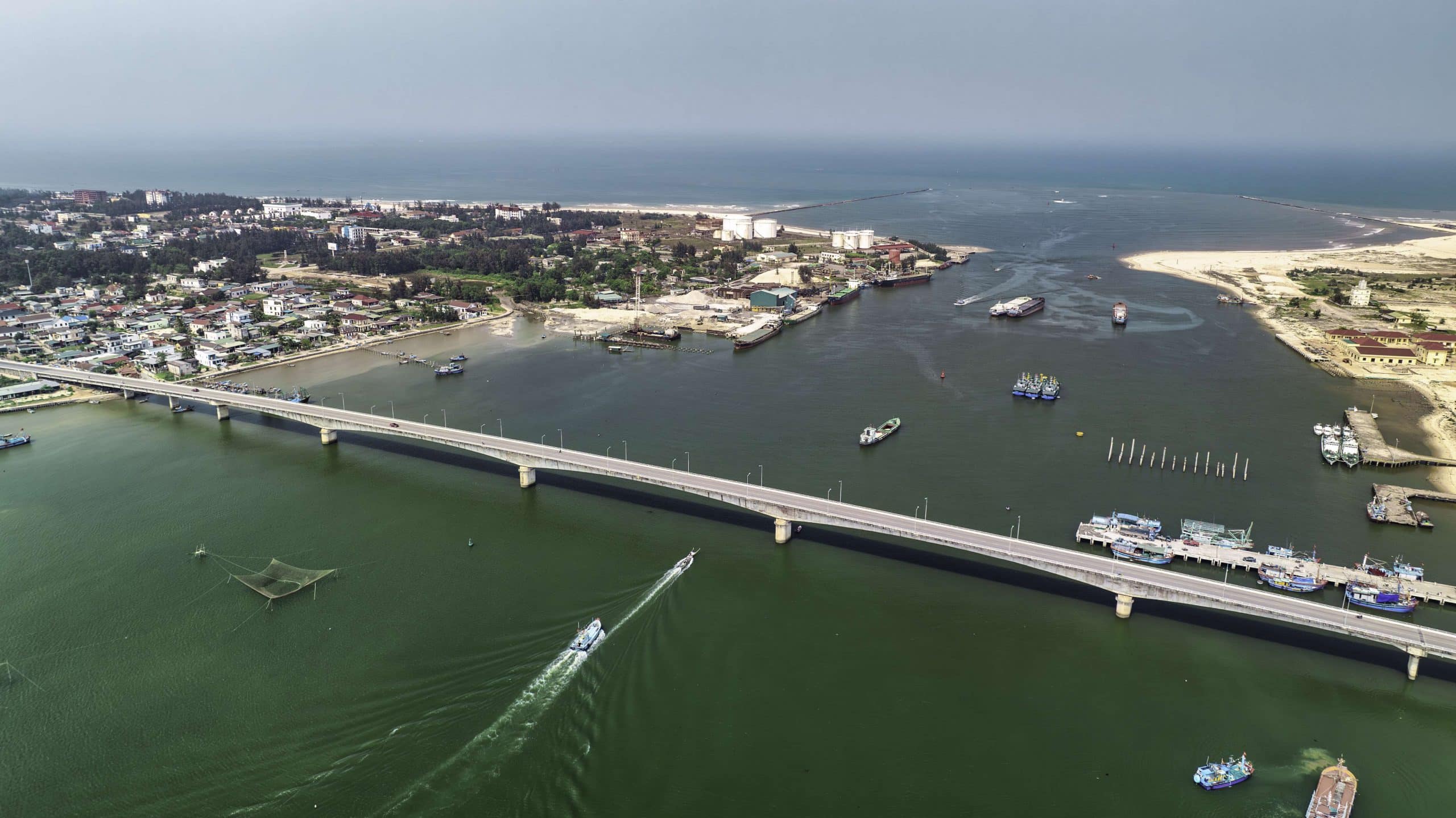Nguyen Hai
Located around 15km east of Dong Ha city in Quang Tri province, the small town of Cua Viet is famous for its traditional dried fish. If you visit Cua Viet or parts of Gio Viet commune in Gio Linh district in the early summer, you will witness a flurry of labor. Village alleys are full of three-wheeled vehicles transporting fish so freshly cooked that it’s still steaming. The fish is transported to the “fish fields”, where every inch of land is used for drying. It’s dried on bricks set some 30cm above the ground.

To produce fragrant and tasty dried fish with a savory sea-salt flavor, many steps are required. Early in the morning, kiln owners make their way to the fishing port to choose and buy the best freshly caught fish. Anchovies and mackerel scads are the preferred species. Some kiln owners even own fishing boats so they can “self-supply” the raw materials. The fish is re-examined and cleaned before being put into the steaming kiln.
Each kiln is operated by some 20 workers who form an assembly line. While one group of workers washes and cleans the fish, another group prepares large pots of boiling water. Trays of neatly stacked fish are put into the steaming kiln for about 10 minutes. Experienced workers know how long to steam fish of varying sizes.

The steamed fish is quickly loaded onto three-wheeled vehicles and transported to the drying area. The vehicles line up to efficiently unload the fish onto drying racks set in a large and open area exposed to wind and sunlight.
The locals often say that this trade “loves sunshine and fears rain” since the weather plays a key role in the production process. For this reason, the fish drying business typically operates from March to September each year. If workers are having a meal and notice the sky begin to darken, everyone will stop eating to rush outside and collect the fish. Even a light rain can reduce the quality of the batch, while a heavy downpour might ruin it completely. This year, kiln owners had to “carry the fish to find sunlight” due to a lack of sunshine in March. They rented trucks to transport the steamed fish up to 90km away to the Lao Bao border area for drying.
After about two days of sufficient sunlight, the dried mackerel scads will be deboned and have their heads removed before being packaged, while the dried anchovies are packaged whole. At this stage, students and elderly people perform much of the work. “Sometimes we get a huge catch, and the boats bring back too much fish for us to hire enough workers to process in time,” said Mr. Nguyen Van Mau, a kiln owner.

In the past, the locals dried fish to preserve and store food for their families during the rainy and flooding seasons. Experience and techniques passed down for generations, combined with modern fishing equipment and larger catches have allowed this industry to supply dried fish to both the domestic and international markets. As well as generating income for locals, the dried fish trade opens up opportunities for tourism, as visitors enjoy visiting traditional craft villages. Visitors to Cua Viet can participate in the production process, learn about the locals’ work, and take home memorable souvenirs and unique products.
This trade enables residents to earn a living and preserves and develops the traditional culture of coastal residents in Cua Viet. The customs, lifestyle, and labor practices in Cua Viet form essential parts of this community’s culture.










